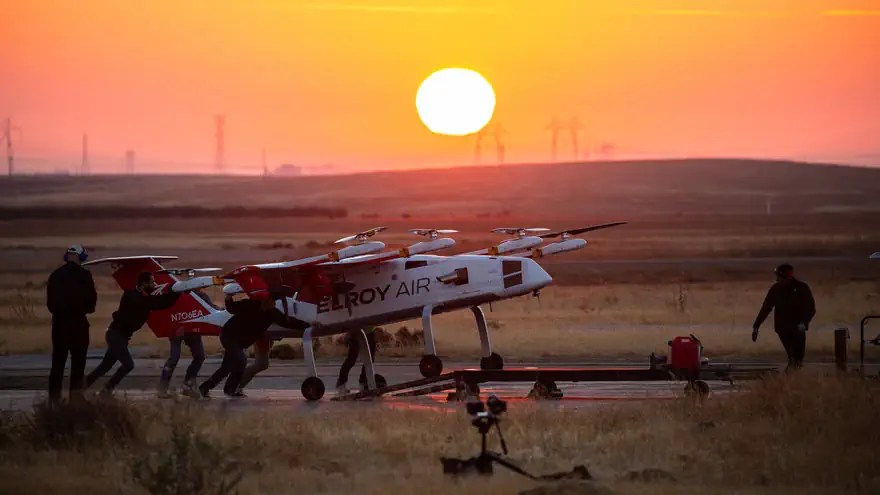
The Elroy Air Chaparral is an autonomous vertical take off and landing (VTOL) aircraft that can deliver 300 lbs of cargo across a 300 mile range. The Chaparral enables high-performing logistics in new places, and will bring rapid shipping to remote sites around the globe at a higher tempo, lower cost, and reduced human risk. Shipping a package by air today requires 5-9 transfers between trucks, trams, and airplanes – each an opportunity for loss and slowdown. The Chaparral has the ability to retrieve a full cargo container from a loading dock and fly it directly to its destination without the transfers and slowdowns.
On November 12th 2023 The Elroy Air Chaparral completed its first flight marking it as the first Autonomous Turbogenerator-Hybrid Electric vertical takeoff and landing aircraft to take flight.
Development on the Elroy Air Chaparral was a combination of technological invention, customer needs exploration, integration within existing logistics networks, and form development. The internal team started with a vague notion of technological potentials for such a system/vehicle. Through iterative processes, spiral inquiry and development have brought forth a design which provides a holistic address to myriad pressing logistical challenges. This vehicle can deliver heavy payloads over long distances without human contact.
The manifest of this design was to expedite global logistics. To that end, we developed an aircraft that can operate independently of traditional infrastructure networks and bottlenecks. By utilizing VTOL flight technology the vehicle is able to descend straight down to a diminutive landing pad without the need of extensive approach vectors nor on-ground infrastructure. Any flat spot will do.
From the human perspective, the ramper loads cargo containers, stages them in the pickup location, then departs the area. The vehicle can autonomously sense, approach, grasp, and affix the appropriate container. It then flies that container to a secondary location hundreds of miles away. No humans, other than service personnel, should ever come into proximity of the vehicle. This capability opens the path forward for high-throughput aerial logistics, potentials for service to contaminated regions, and supply drops to remote regions.
The Chaparral is a hopeful, purposeful product, and a daunting endeavor. In utility and capability, it is more “box truck” than it is “Ferrari”. In service it is more “aid worker” or “delivery personnel” than it is “war-fighter”. The design team felt the aesthetics should reflect these qualities while actively avoiding associations to the most recognizable unmanned flying vehicles which are war machines. The lines of the Chaparral were inspired by sedans and pickup trucks from the 1970’s (alongside more future-facing reference). The ‘face’ was sculpted to maintain a friendly neutrality. All of this was iteratively sculpted then verified via computational flow dynamics. The livery was developed to have a strong A/B read – when above, the bold orange is visible, when parked it remains mostly white and of a piece with general aviation. The appearance of the Chaparral embodies the aspirations of this novel, paradigm shifting technology, while grounding it in the contexts from which it operates.

